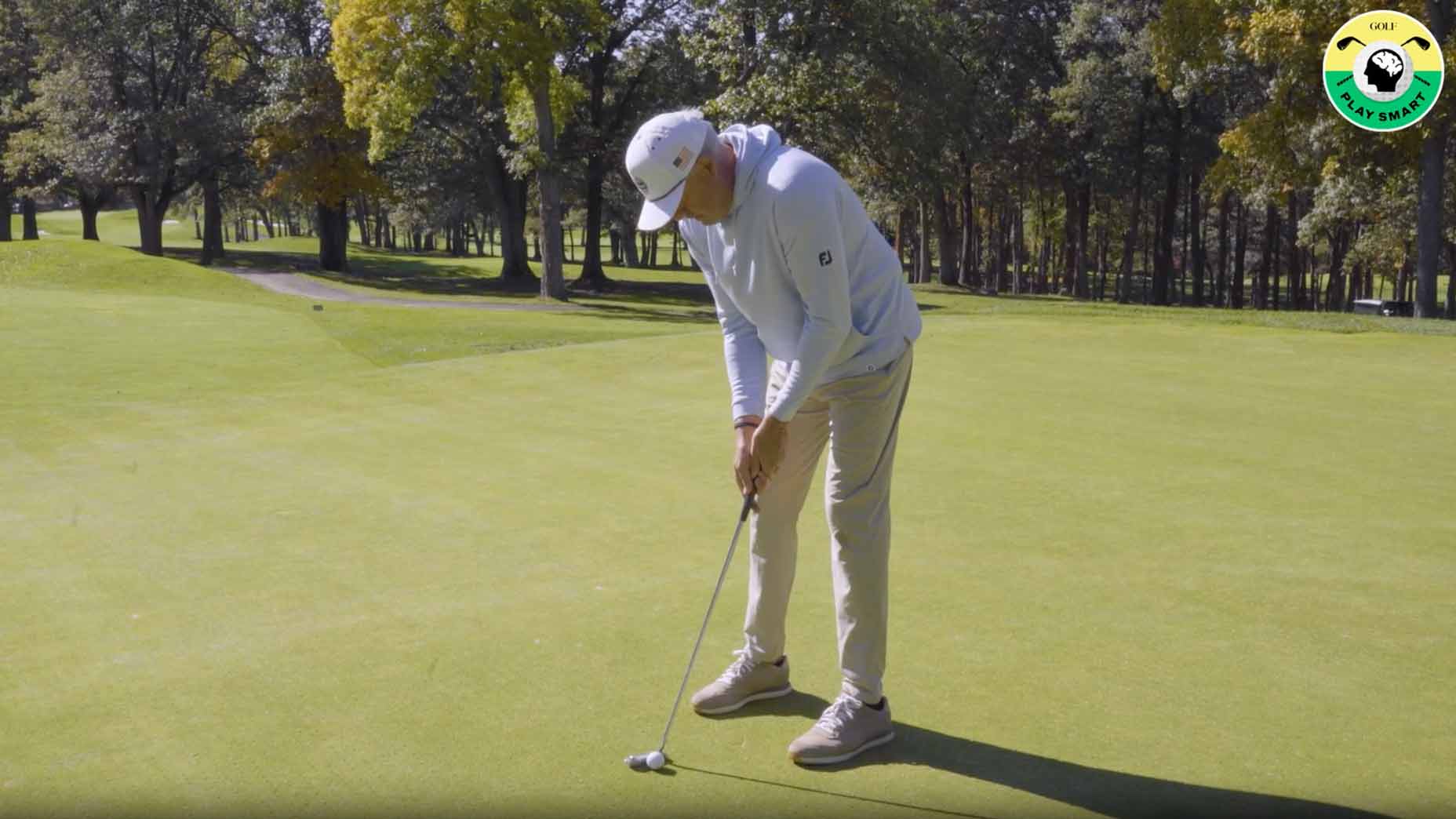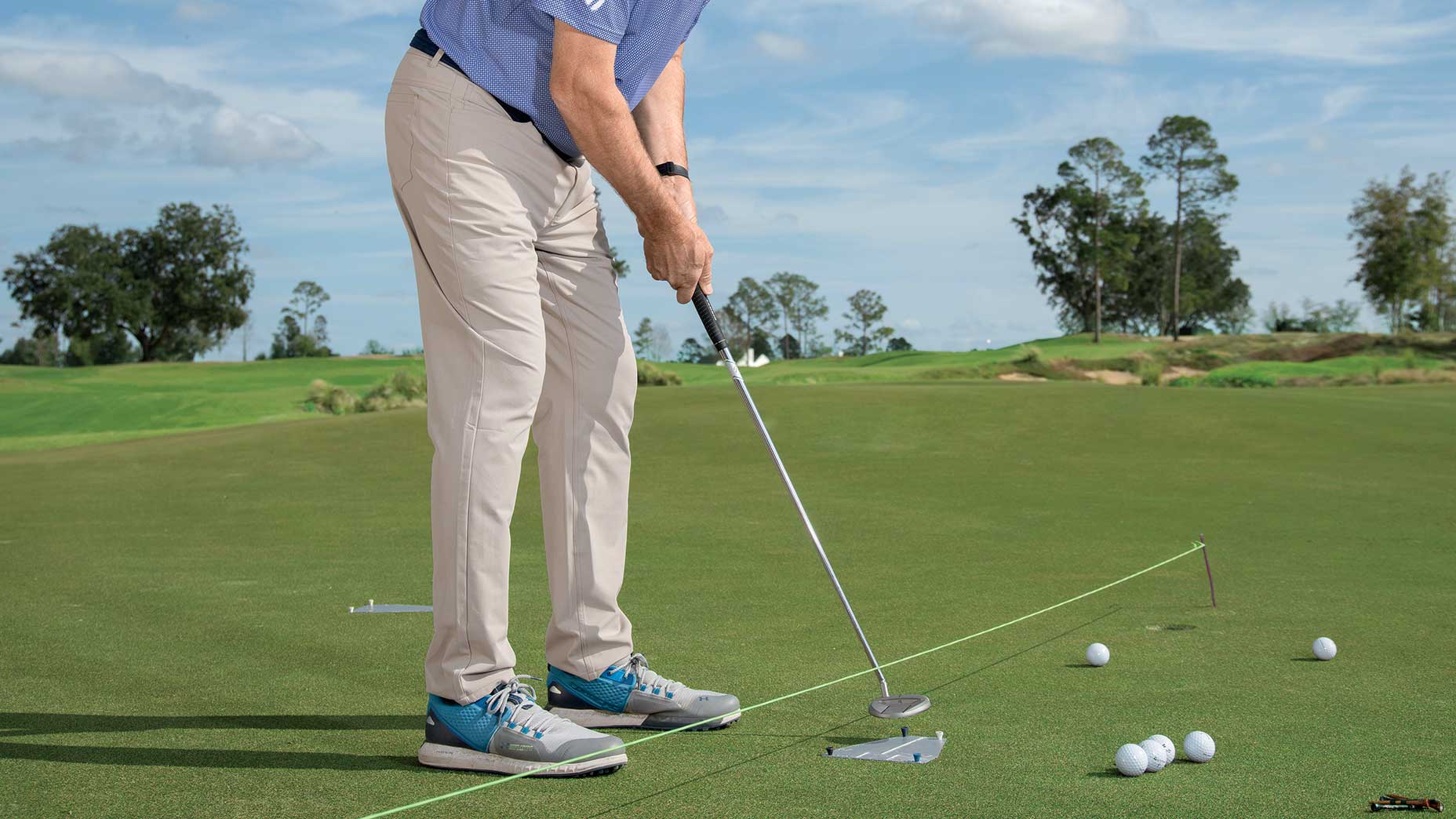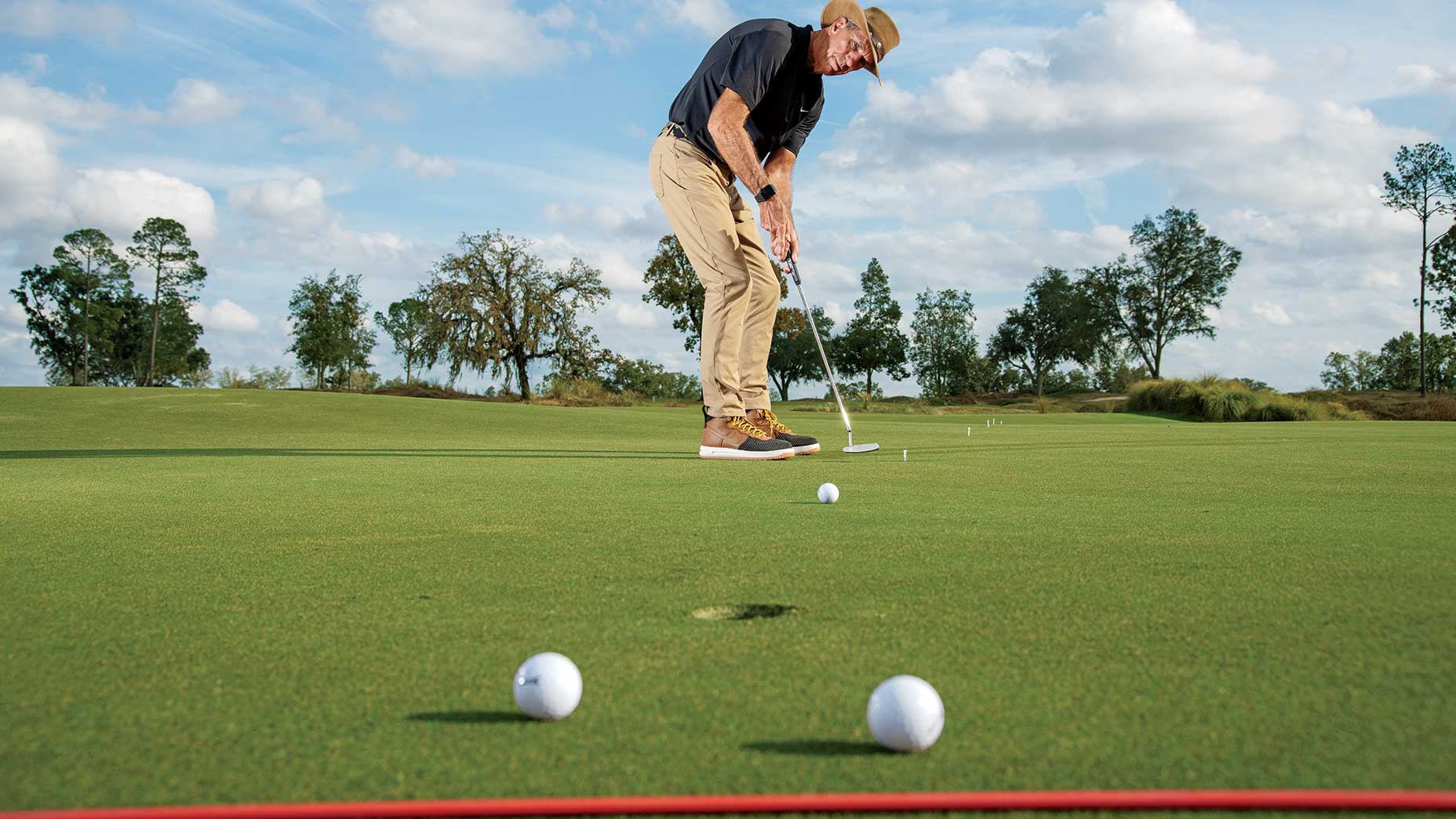Welcome to Play Smart, a regular GOLF.com game-improvement column that will help you become a smarter, better golfer.
In the last edition of Play Smart, we explained that becoming a good putter is contingent on two factors: a solid stroke and proper green reading. In that column, Bryson DeChambeau gave us a great tip for becoming a better green-reader. In today’s column, we will go over a tip for dialing in your stroke.
Check out the video below featuring GOLF Top 100 Teacher Jonathan Yarwood for more.
‘Last-image’ putting
When you watch the best putters in the world you’ll notice that everything looks very still. There isn’t a bunch of extraneous movement. They simply rock their shoulders back and through. This is something that all golfers should strive for with their own putting strokes.
While you want stillness through most of your body, keeping your head from moving is the most critical.
If you watch poor putters, you’ll often see them turn their head and shoulders as they follow the path of their putter and the ball. This flaw can cause all sorts of issues.
“That affects the rotation of the face, affects the path — it does all sorts of [bad] things,” Yarwood says. “We do not see that with a single good putter.”
When a good putter is making their stroke they will simply let their eyes travel along the target line without too much movement of the head. If you want to become a solid putter, you should strive for this, too.
To teach yourself how to keep your head quiet, try this method that Yarwood uses with his students. Set up to the ball and focus intently on the exact spot where your ball is sitting on the green. Then, hit the putt — but don’t look up until a beat after the ball leaves the face.
“You should see a little black image — a little black silohuette — of where that ball was,” Yarwood says. “It’s called last image on your retina.”
By waiting until you see this last image, it will teach you to keep your head down — and still — until the ball is rolling toward the hole. This will ensure you have a quiet head throughout your stroke and give you a much better chance of holing more putts.









